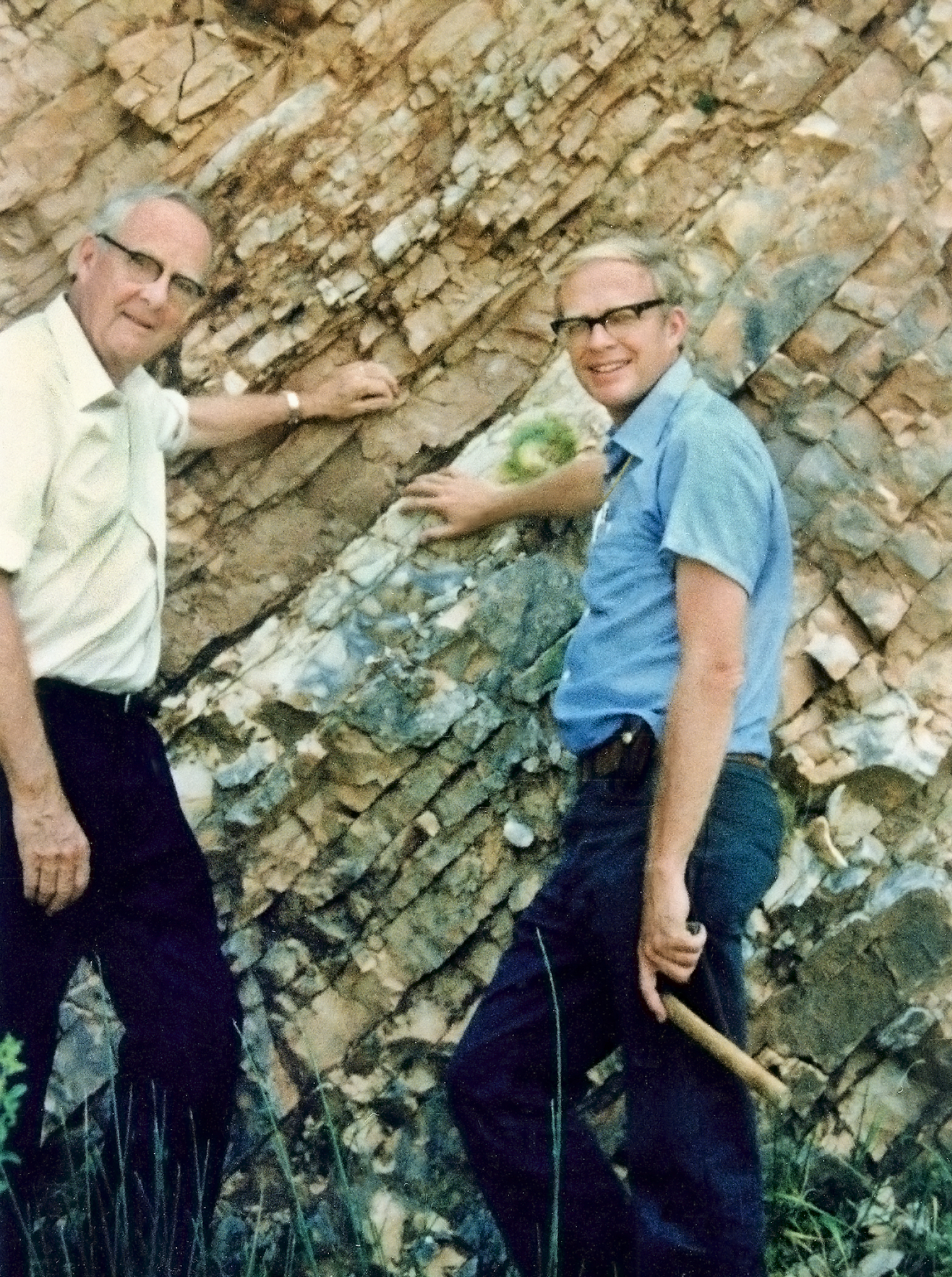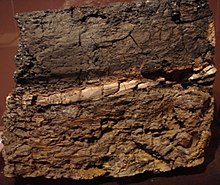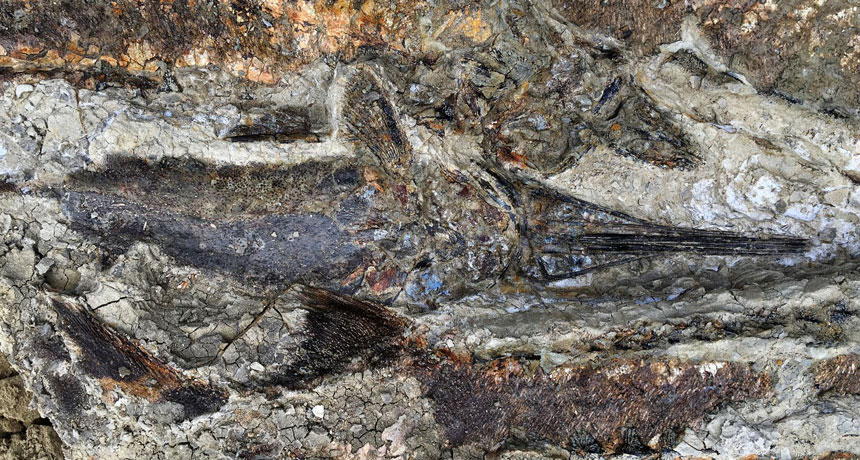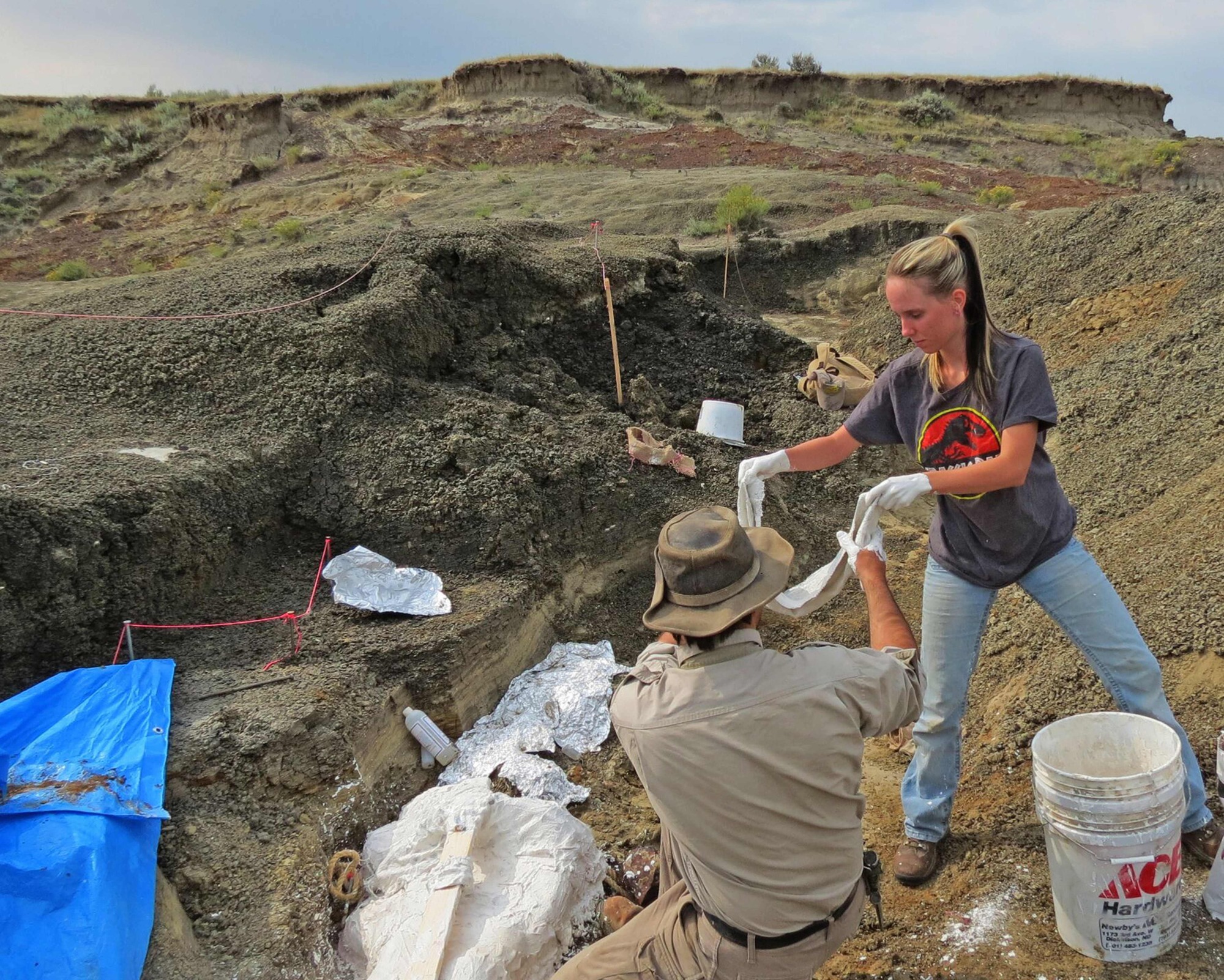There have been a number of small but important discoveries recently illuminating portions of the history of life here on Earth. As usual I think I’ll start with the earliest and move forward in time.
One of the most common modes of life in the natural world is parasitism, where an individual of one species spends a large part of its life literally living off of a member of another species. While parasitism is technically a form of symbiosis it differs from mutually beneficial symbiosis in that the parasite gains at the expense of its host.


A very large number of different species, spread across every major taxonomic group of both animals and plants are parasites for at least a part of their lives. There are so many parasites out there that you would expect that there would be a lot of evidence of parasites in the fossil record.

It’s not that easy, a lot of parasites don’t fossilize well, think of a tapeworm. Or consider a dinosaur that is infected with fleas. If that dino dies the fleas will quickly leave to try to find another host, they won’t be fossilized with the dinosaur.
Even if you do find two different species fossilized together you have the problem of determining whether your fossil is a true example of parasitism. For example in my collection I have a small clamshell from the cretaceous period that has the tube of a feather duster worm attached to it. For all I know the worm could have built its home on the shell after the clam had died. So trying to figure out when one creature is benefiting by harming the other isn’t easy.

Nevertheless a team of paleontologists from Northwest University in Xi’an China, the Swedish Museum of Natural History and Macquarie University in Sidney Australia has announced what they assert is the earliest known example of parasitism. Their evidence comes from the Cambrian period, approximately 515 million years ago and resembles in many ways my fossil mentioned above.
The fossils consisted of a large number of shells of a species of brachiopod, a creature whose shell resembles that of a clam although the animal inside is totally different. While brachiopods today are quite rare, in the early period of life’s history, more than 250 million years ago, they were more common than clams.

Examining the brachiopod shells the paleontologists found that approximately half were encrusted with the tubes of worms, just like my fossil, while the other half were not. Measuring the shells of the brachiopods and using that as an indication of the animal’s health the researchers discovered that the encrusted brachiopods were consistently smaller, by about 26%. This is clear evidence that the worms were harming the brachiopods. In other words the worms were parasites.

Not only that, but because like a clam, the shells of brachiopods grow outward from their edges the scientists were able to determine how early in the life of a brachiopod it had become encrusted. Again, those brachiopods that were encrusted earlier in their lives showed the most pronounced size reduction, further evidence of parasitism.
So it appears that parasitism as a mode of life has existed for nearly as long as multi-cellular creatures have. Another common mode of life that has also recently been found to have ancient roots is suspension feeding; animals that swim with their mouths wide open, filtering plankton and other small creatures out of the water. In today’s oceans baleen whales and basking sharks are the best known suspension feeders and are among the largest creatures on Earth.
Now a new study by paleontologists at the Universities of Bristol and Zurich of an ancient fish from the Devonian period, about 380 million years ago, has provided strong evidence that at least one of the ocean’s largest inhabitants back then lived in much the same way. The animal in question belongs to the group of armored fish known as placoderms and is formally called Titanichthys. A giant for its time Titanichthys measured more than five meters in length but crucially its jaw was more than a meter in length. Modern suspension feeders also have greatly elongated lower jaws allowing them to scoop up the greatest amount of water as they swim.
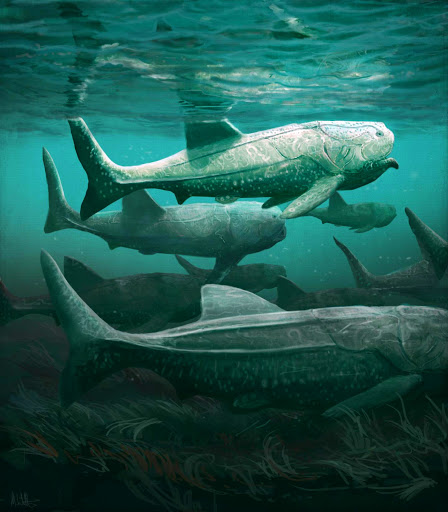
The new research also found that while the lower jaw of Titanichthys was long it wasn’t very strong, neither the bones themselves nor the muscles attached to the jawbones would have been sufficient to deliver a strong bite, further evidence of the fishes lifestyle as a suspension feeder.
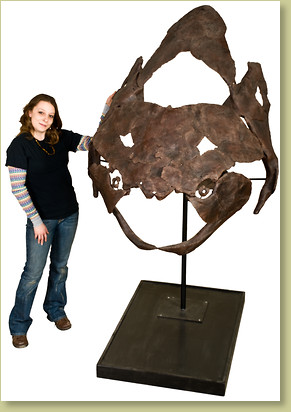
Moving forward in time we come to my final story for this month, which concerns the asteroid that is presumed to have caused the extinction of the dinosaurs. It was only about twenty years ago that geologists succeeded in finding actual site of that impact, the Chicxulub crater in the Yucatan peninsula of Mexico.
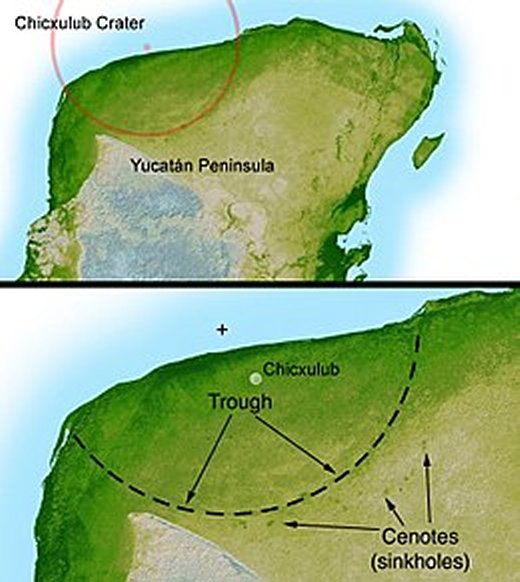
Ever since that discovery geologists have surveyed Chicxulub, hoping to learn as much as they can about how the 10 kilometer wide space rock caused so much damage. Destruction so great that it led to the extinction of about 75% of all of the species on Earth. In a paper published in Nature Communications scientists from the University of Texas at Austin, the Imperial College London and the University of Freiberg in Germany have used computer simulations to investigate what the likely initial conditions of that asteroid strike were in order to order for it to have produced the effects seen in the Yucatan today.
Based upon the diameter of the Chicxulub crater, its depth and the observed distribution of ejected material from sites around the world the team of geologists have concluded that the asteroid struck the Earth at an angle of 60º, an angle that they argue produced the greatest amount of destruction. According to the simulations a steeper angle, say 70-90º would have produced a deeper crater but one where the ejecta was more confined to the area around the crater, in other words the other side of the Earth might have been subjected to considerably less devastation. On the other hand, if the asteroid had struck at a shallower angle, say 30º or less, the crater would have also been shallower and the distribution of ejecta would have been much more concentrated in the direction of the asteroid’s motion, which again might have spared some parts of the Earth from baring the full brunt of the asteroid’s destructive power.
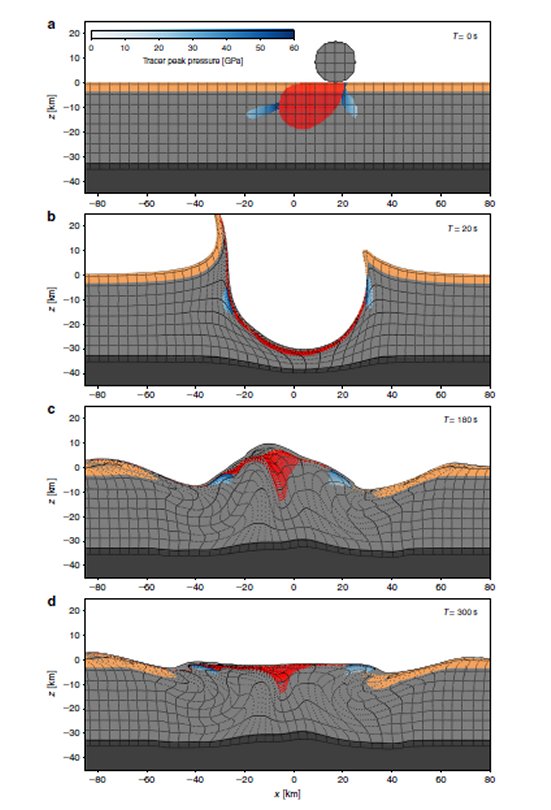
If the simulations produced by the team of geologists do in fact correspond to what actually happened 66 million years ago then the dinosaurs were doubly unlucky. Not only did the asteroid strike suddenly from out of the depths of space but it also struck in just the right way to both produce the maximum destruction and to spread that destruction evenly around the entire world.
Of course as mammals we should remember that what was bad luck for the dinosaurs was good luck for us!

